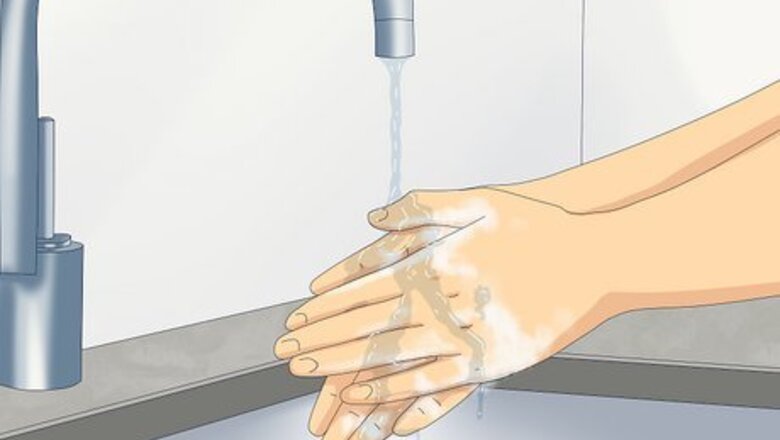
views
Establishing Your Presence
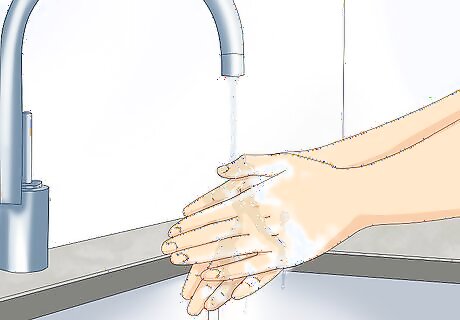
Wash your hands before handling your snake. If you have a scent on your hands, the snake may mistake it for food. They could nip or bite. Snakes rely heavily on their sense of smell. Washing your hands also reduces the risk of harmful bacteria or parasites being transferred to your snake.
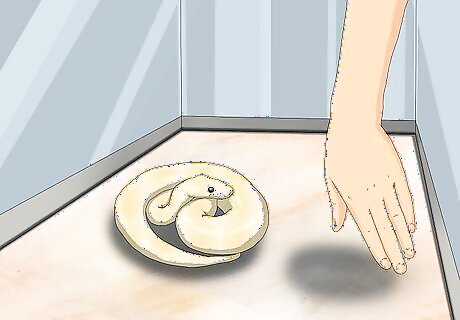
Get the snake accustomed to your presence. If you recently purchased a snake as a pet, you will need to spend some time training your snake to accommodate your presence. Twice per day, let your hand rest inside your snake's cage for two or three minutes. Over time, your snake will get used to your scent and learn that it is not something threatening. Your snake will eventually come out to investigate. Since your snake is just getting used to your presence at this time, you should remain cautious. Remember to wash your hands prior to putting them in the snake's cage. If you forget this step, your snake could easily mistake your hands for prey.
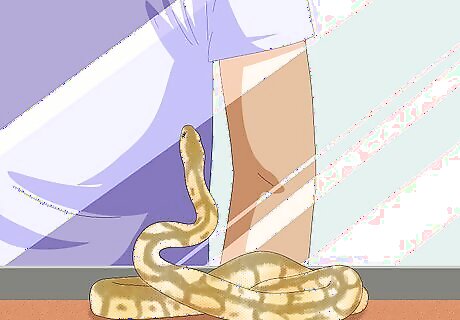
Make sure your snake is aware of your presence. Don't talk to your snake to announce your presence as snakes can't hear human speech.
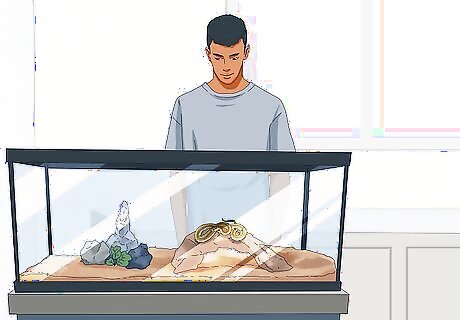
Move slowly and predictably to avoid surprising your snake. Whenever you are around your snake, you want to avoid fast movements. Move slowly when you are around your snake's cage, and avoid surprising your snake from a strange angle. Try to approach your snake from the side rather than from above.
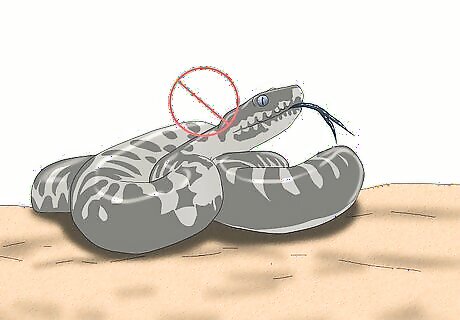
Avoid picking up a hissing snake. If your snake is feeling fearful or aggressive, it may hiss. If you hear your snake hissing, it is not a good time to handle them. If you force yourself on the snake at this time, they may attack you.
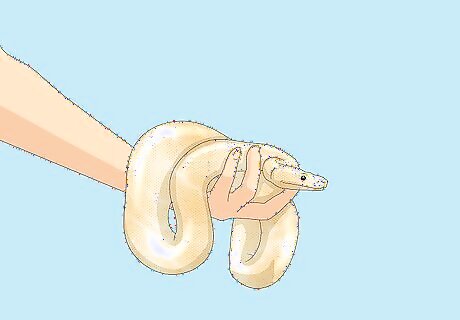
Handle your snake when it looks a bit tired. You want to handle your snake when it is feeling tired but remains awake. You should avoid handling your snake after it has eaten. Similarly, don't hold your snake when it is about to shed.
Picking up a Snake
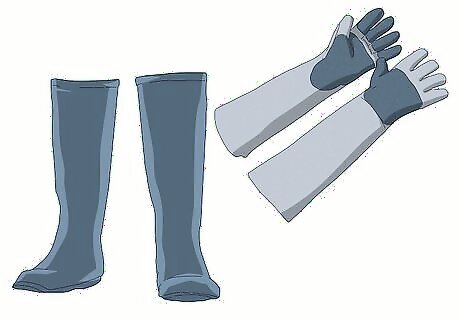
Put on your protective gloves and boots. Slip on your safety gloves, which are especially important for non-venomous but snappy snakes. Sturdy boots can also be a good idea, since there is always some risk involved in handling a snake. For instance, if the snake gets onto the ground and becomes fearful or aggressive, it could bite your feet.
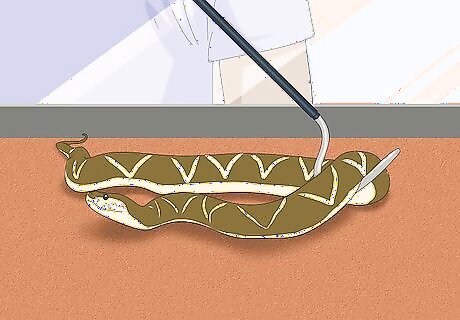
Use a snake hook if your snake is moving around the cage. If your snake is cruising around the cage, you can use a snake hook to get a hold of it. After you have lifted it up, you can then hold it with your hands or continue holding it with the hook. If you feed your snake in the same cage that it lives in, you may want to use a snake hook. The snake hook can be a way of telling the snake that it is holding time rather than eating time. Additionally, you should use tongs to place the snake's food into the cage. The snake may strike at the food, potentially biting your hand on accident. Using tongs will make it less likely that your hand is bitten.
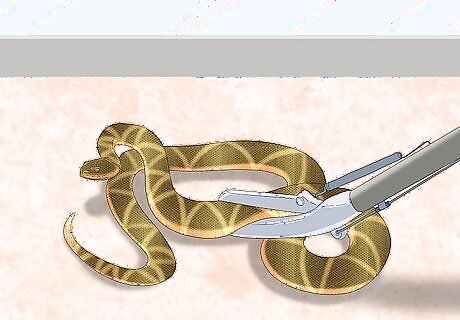
Pick the snake up with tongs if it is aggressive or agitated. You should only use tongs once you have experience with them because you can hurt the snake. Apply the tongs just below the neck of the snake, using your snake hook to support the back of the snake. Make sure that you do not apply the tongs near the snake's neck, however, as this can injure the snake. Keep the snake safely away from your body so that the snake cannot strike you. Use the lightest amount of pressure possible so that you don't injure the snake.
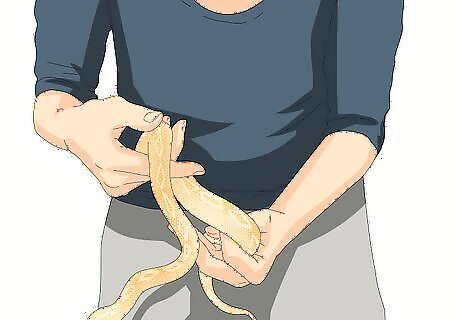
Use both hands to hold the snake. Hold one hand a third of the way down the body and the other hand under the last quarter, so that you are supporting the whole body. Support the snake with both hands. If the snake is moving when you are picking it up, it may slither away from you while you are holding it.
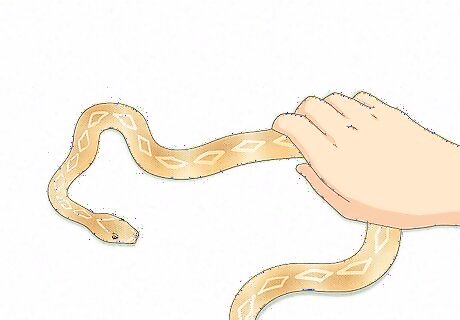
Pick up the snake from the mid-body area. You want to avoid approaching the snake's head, as well as the tail. Instead, you want to pick up the middle of the snake's body. Be gentle and try to support the full weight of your snake. If you try to pick it up from the tail, the snake could hurt itself trying to escape your grasp. If you try to pick it up from the head, the snake will likely bite you. Snakes are sensitive in the head area.
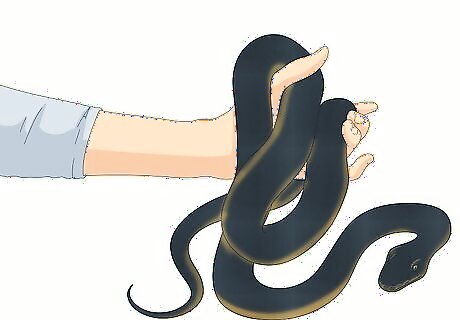
Let the snake adjust. The snake may wrap around one of your hands to stabilize itself. Let it adjust into a comfortable position. If it's a constricting snake, it's likely wrap its tail around your wrist and forearm, which is fine.
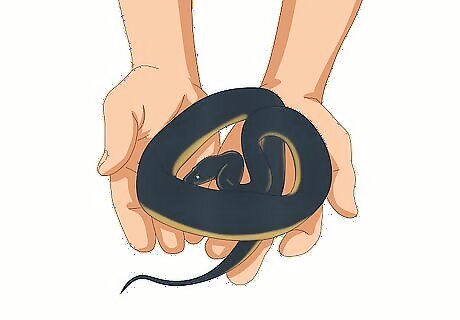
Stay attentive to the snake's experience and safety. Snakes are emotional creatures so you want to attend to their experience. Young snakes may display some fear when getting used to being held. Some snakes like being held more than others. It is best to stay confident and calm, which should help your snake get used to the experience of being held. Stay calm while holding your snake.
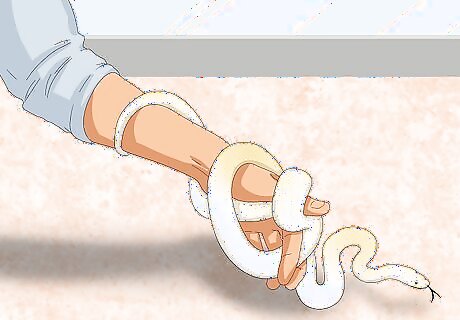
Return your snake to its cage by lowering it in. You can place it on the substrate or let it move out of your hands to a branch or the cage floor on its own. Secure the lid when you are done, since snakes are great escape artists.
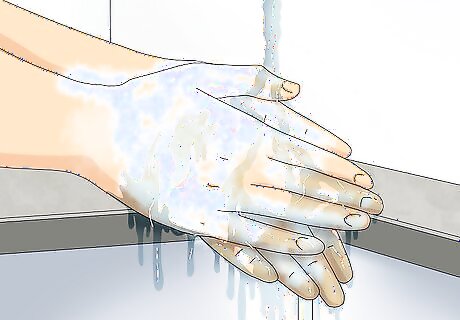
Wash your hands again. Reptiles can carry germs that are not safe for humans, like salmonella. Immediately wash your hands when you are done handling your snake.




















Comments
0 comment